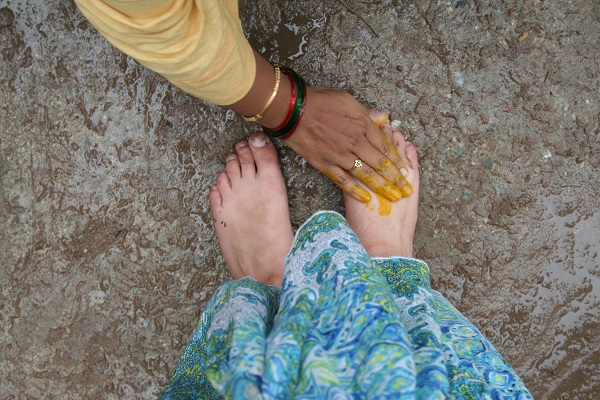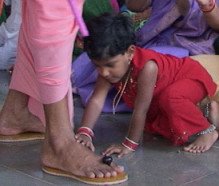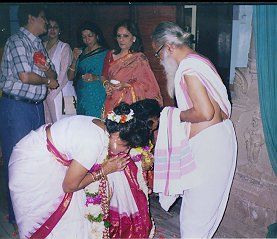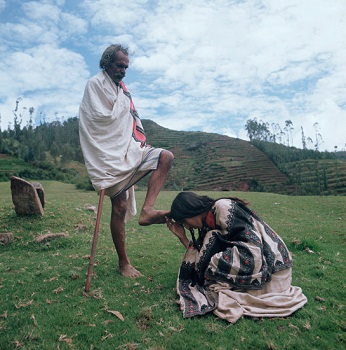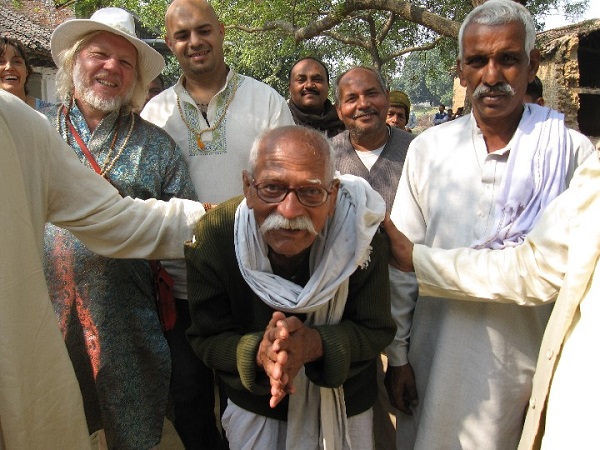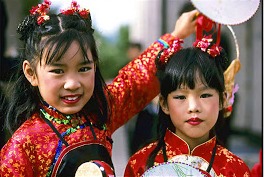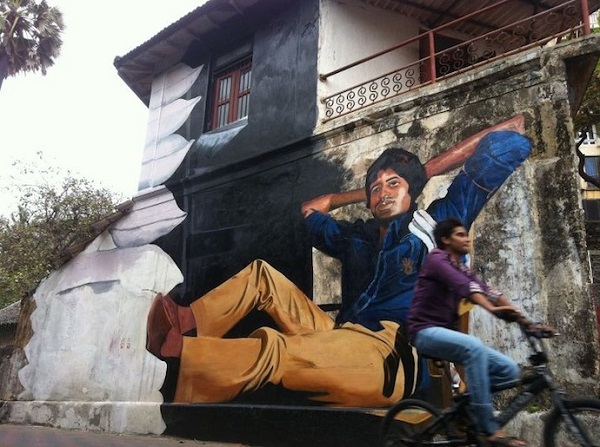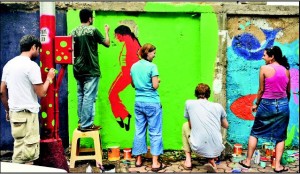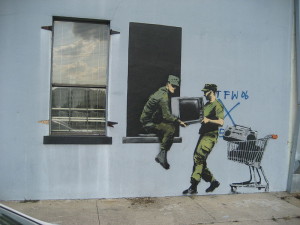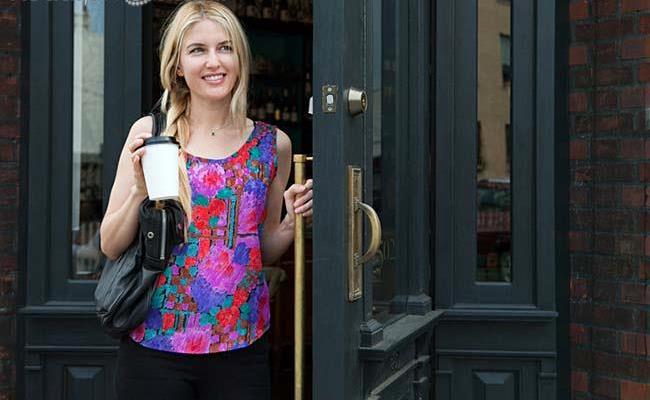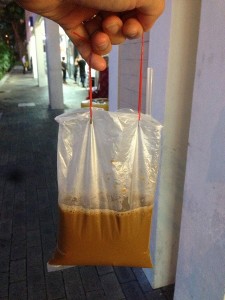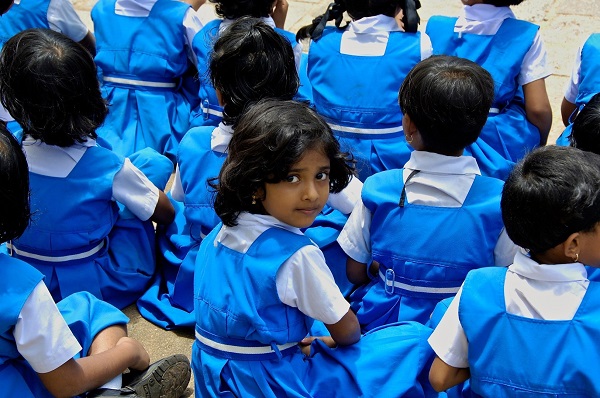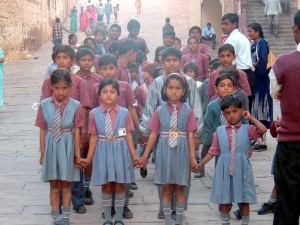What’s most annoying about going to the movies? Having to hear people crunch popcorn. Why don’t they eat samosas instead?
 by Shweyta Mudgal
by Shweyta Mudgal
I’m an avid cinema-goer; you’d find me at the movies at least once a week. To be a small speck in a large motion picture-loving audience that delights in watching the magic unfold on celluloid gives me a high like none other!
There is more to cinema-going than just seeing the film – it’s more than just going out with friends, family or alone; than surrendering oneself for the next few hours to on-screen characters and being transported into an alternate world through their lives and, of course, of snacking along as the story unfolds.
Cinema-going is usually conducted with another leisure activity, either pre- or post – such as having dinner or going out for a drink. Whether one plans to do either or both along with going to the movies or not, what is deemed mandatory is the indispensable bag of popcorn that one must devour while the movie is on.
But this was not always the case. As strange as it sounds, there used to be a time when the movie-going experience was devoid of its present- day lead player – popcorn! Earlier, cinema-halls had no snack bars and eating or drinking in theatres was unheard of for two reasons –
day lead player – popcorn! Earlier, cinema-halls had no snack bars and eating or drinking in theatres was unheard of for two reasons –
1. Munching and crunching during ‘silent movies’ was considered inappropriate during the film, and
2. Spillage of food/drink would result in a high cost of maintenance of the grand lobbies and the gorgeous rugs laid out in the theatres of that time.
It was not until the Great Depression hit the United States in 1929 that popcorn emerged as a shining star, rather a saviour for the cinema-hall owners of those times. Cinema became an escape from reality, and popcorn, with its high profit margins and affordable prices – as low as five cents a bag – became the ideal snack for movie-goers. Any spillage was easy to clean, it was easy to eat in the dark and its easy portability helped give it the iconic status that it enjoys today – of being the quintessential, global accompaniment to the movie-going experience.
 Yet to me, popcorn is not the ultimate cinema snack. Here’s why – this munchie, on account of its crispy, dry nature makes for a noisy snack, thus making its eaters add their own unwanted background score to the movie. The only sound you’re supposed to hear in a cinema is the one coming from the speakers, one would think. It is bad enough that in the theatre, I am almost always seated right behind two long-lost friends playing loud verbal catch-up sessions or next to a frequent text-addict. And in the case of Indian films, there are the little kids, with their many questions, energetic acrobatics and frequent jabs during the movie. Add to this, 500-odd viewers chomping away popped kernels and my experience can truly be described as ‘movie-going going gone’!
Yet to me, popcorn is not the ultimate cinema snack. Here’s why – this munchie, on account of its crispy, dry nature makes for a noisy snack, thus making its eaters add their own unwanted background score to the movie. The only sound you’re supposed to hear in a cinema is the one coming from the speakers, one would think. It is bad enough that in the theatre, I am almost always seated right behind two long-lost friends playing loud verbal catch-up sessions or next to a frequent text-addict. And in the case of Indian films, there are the little kids, with their many questions, energetic acrobatics and frequent jabs during the movie. Add to this, 500-odd viewers chomping away popped kernels and my experience can truly be described as ‘movie-going going gone’!
Fine, call me a grumpy movie-goer who demands complete silence during film screenings. But I have nothing against what you eat, who you make out with in the back seats or your kids whom you’ve sneaked into the theatre. All I want to do is watch in silence what I have paid for and be spared of your unnecessary background noise, especially the food orchestra.
India’s all-time preferred equivalent to this American movie-munchie has been the Samosa. This ‘triangular slice of heaven’, in my opinion, is the ideal movie-time snack. What’s not to love? It is compact and easy to hold, it fits perfectly in the palm of the hand, it doesn’t spill easily and it is delightfully satiating. Besides, as crusty as it is on the outside, it is soft on the inside, so it is easy on the ears of devoted movie-watchers like me.
 So the next time you’re up for spending some time in a dark room with strangers, chuck that tub of popcorn and opt for the humble, desi samosa instead. If you live in India, you’ll be lucky enough to see it right up there with the other snack options on the menu. If you live outside India, like I do, you might have to sneak it into the theatre. So, whether the main protagonist of your movie is Sean Penn or Shah Rukh Khan, at least you’re not grating on the eardrums of your neighbour with your crunching and munching. If anything, the fragrance of the samosa might just tempt him into asking you where you bought it, so he can make a run for it during intermission!
So the next time you’re up for spending some time in a dark room with strangers, chuck that tub of popcorn and opt for the humble, desi samosa instead. If you live in India, you’ll be lucky enough to see it right up there with the other snack options on the menu. If you live outside India, like I do, you might have to sneak it into the theatre. So, whether the main protagonist of your movie is Sean Penn or Shah Rukh Khan, at least you’re not grating on the eardrums of your neighbour with your crunching and munching. If anything, the fragrance of the samosa might just tempt him into asking you where you bought it, so he can make a run for it during intermission!
Alfred Hitchcock once said, “If it’s a good movie, the sound could go off and the audience would still have a perfectly clear idea of what was going on.” Clearly, he too believed in ditching the popcorn for a samosa or two!
A Mumbaikar by birth and a New Yorker by choice, recently-turned global nomad Shweyta Mudgal is currently based out of Singapore. An airport designer by day, she moonlights as a writer. ‘Outside In’ is a weekly series of expat diaries, reflecting her perspective of life and travel, from the outside-in. She blogs at www.shweyta.blogspot.com and on principle, buys her samosas BEFORE she buys her movie tickets.
(Pictures courtesy screencrush.com, www.guardian.co.uk, thevillagegranny.com, www.livemint.com)

